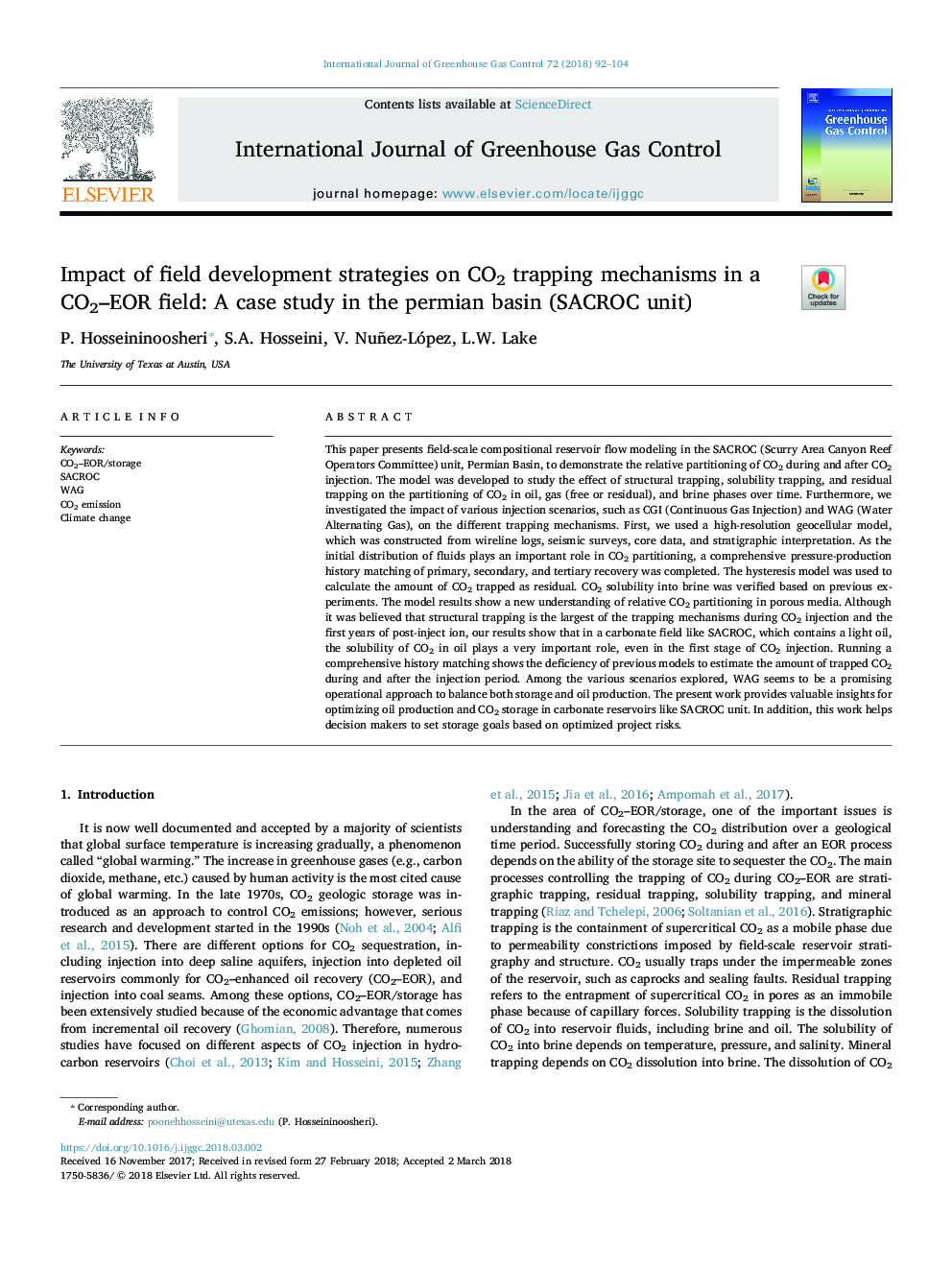| کد مقاله | کد نشریه | سال انتشار | مقاله انگلیسی | نسخه تمام متن |
|---|---|---|---|---|
| 8089460 | 1521947 | 2018 | 13 صفحه PDF | دانلود رایگان |
عنوان انگلیسی مقاله ISI
Impact of field development strategies on CO2 trapping mechanisms in a CO2-EOR field: A case study in the permian basin (SACROC unit)
دانلود مقاله + سفارش ترجمه
دانلود مقاله ISI انگلیسی
رایگان برای ایرانیان
موضوعات مرتبط
مهندسی و علوم پایه
علوم زمین و سیارات
فرآیندهای سطح زمین
پیش نمایش صفحه اول مقاله

چکیده انگلیسی
This paper presents field-scale compositional reservoir flow modeling in the SACROC (Scurry Area Canyon Reef Operators Committee) unit, Permian Basin, to demonstrate the relative partitioning of CO2 during and after CO2 injection. The model was developed to study the effect of structural trapping, solubility trapping, and residual trapping on the partitioning of CO2 in oil, gas (free or residual), and brine phases over time. Furthermore, we investigated the impact of various injection scenarios, such as CGI (Continuous Gas Injection) and WAG (Water Alternating Gas), on the different trapping mechanisms. First, we used a high-resolution geocellular model, which was constructed from wireline logs, seismic surveys, core data, and stratigraphic interpretation. As the initial distribution of fluids plays an important role in CO2 partitioning, a comprehensive pressure-production history matching of primary, secondary, and tertiary recovery was completed. The hysteresis model was used to calculate the amount of CO2 trapped as residual. CO2 solubility into brine was verified based on previous experiments. The model results show a new understanding of relative CO2 partitioning in porous media. Although it was believed that structural trapping is the largest of the trapping mechanisms during CO2 injection and the first years of post-inject ion, our results show that in a carbonate field like SACROC, which contains a light oil, the solubility of CO2 in oil plays a very important role, even in the first stage of CO2 injection. Running a comprehensive history matching shows the deficiency of previous models to estimate the amount of trapped CO2 during and after the injection period. Among the various scenarios explored, WAG seems to be a promising operational approach to balance both storage and oil production. The present work provides valuable insights for optimizing oil production and CO2 storage in carbonate reservoirs like SACROC unit. In addition, this work helps decision makers to set storage goals based on optimized project risks.
ناشر
Database: Elsevier - ScienceDirect (ساینس دایرکت)
Journal: International Journal of Greenhouse Gas Control - Volume 72, May 2018, Pages 92-104
Journal: International Journal of Greenhouse Gas Control - Volume 72, May 2018, Pages 92-104
نویسندگان
P. Hosseininoosheri, S.A. Hosseini, V. Nuñez-López, L.W. Lake,